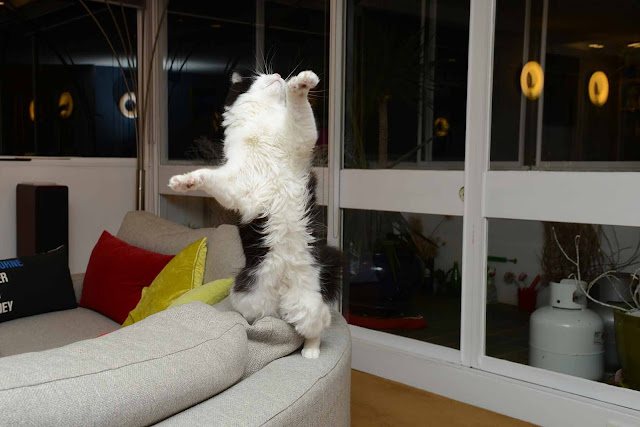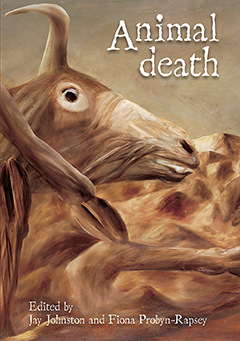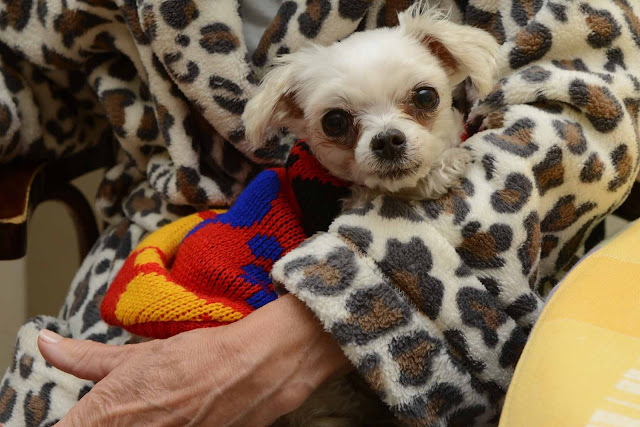 |
| Dr Ilana Mendels: passionate about hands-on education. |
Continuing
education is so important for veterinarians. Veterinarians benefit by being
challenged and learning new skills, clients benefit because their veterinarian
has a broader skill set, and most importantly, our patients benefit.
SAT
interviewed Dr Ilana Mendels, energetic founder of veterinary continuing
education provider VetPrac.
Who are you and what do you do?
I am the
daughter of a social worker and shirt salesman both of whom became national
leaders in their field by the time they retired. My brother helps manage a
hotel. My grandmother owned the first French beauty parlour in China, my great
uncles fought in the 2nd world war, some were doctors. One of
my ancestry worked with Louis Pasteur. I was born in Australia and have studied
veterinary science, games and informal education. I was brought up with
principals of charity, kindness, respect, compassion and activism.
As a qualified
veterinary surgeon (QVS) I bridge the gaps between the human animal-bond and
help people to take better care of their animals. As the director of VetPrac I
facilitate the development of individuals who want to train to be better
clinicians and improve the health and quality of life of animals.
I love my
job because it is gratifying to effect change in a positive way. I get to
interact with people and animals. I get to be at the frontlines of science and
share ideas with interesting people.
I love my
job because I get to work with animals and it’s flexible enough to let me
follow my passions. A lot of people get bored in practice squeezing anal glands
etc. When I enter a consult I ask myself, and the owner, how can I help. It
might just be an anal gland squeezing, and then turn into something else… To be
able to improve the quality of life of an animal by increasing the
understanding between that animal and its carer (farmer, owner, researcher) is
a very important role. And to have the science training to discover and solve
the problems that do exist is extremely useful.
What got you into studying veterinary science in
the first place?
Apparently,
I wanted a farm and I was told it would cost money to take care of the
animals on it. I said, I could take care of them myself, and was told, then
I’ll need to be a vet. So I said – well then – I’ll be a vet. There have been
moments when I wonder what I’m doing and is this the right decision to stay in
it. And so far, I keep practicing. Mostly because I don’t believe there is
another profession that brings you so closely into the connection between man
and animal in so many different ways.
Why the move into continuing education?
I had the vet
training at university, I was reading the same books and journal articles as
everyone else, I was on VIN, attending case clubs etc, but I found it hard to
grasp certain concepts. There was a gap between what existed in all that
material and what I was able to achieve in practice. My capabilities did not
match my capacity and I sought a way to change that. I didn’t have a natural
ability for some things and knew I could be taught. The experiences I had with
the available continuing education resources at the time were dissatisfying.
So, I built my own program. I also have a back ground in informal education. I
spent 8 years as a youth leader which included a year at a training institute
and a year as the national leader for education. I had an idea about how I
could learn more effectively for myself and thought other people might be
having the same experiences. Turns out they did.
 |
| Dr Ilana Mendels with a feline patient. |
What are the biggest challenges of being a veterinarian?
Maintaining an
active skill set and remembering all the information
Being appreciated.
Managing grief and
compassion fatigue
Communicating with
colleagues and clients
Decision making
The lack of
direction in general practice
These are the
challenges of life, I am told…
Are there any special non-humans in your life right
now? If so, who and tell us a little about them. How do you spend time
together?
I am looking after
a cat named Minty. We play with a little green ball she likes and I spend a lot
of time hiding plastic bags from her, because she eats them. When she gets sick
of me or wants my attention she whacks me with a closed paw. My parents have a
very clever Rough Collie who I play with. He has a habit of breaking up fights.
It’s really cool. He will cut an aggressor from the pack and keep them
separated from the play area until everyone calms down. I’ve never seen
anything like it. I’ve tried teaching him tricks, but he learns so quickly and
we don’t reinforce them with anything functional. So he just gets a lot of
massage and cuddles and seems pretty happy.
Do you have any favourite vet or pet themed
websites?
I really like the
VetPrac Facebook page. It’s fun. Vetico is new one I’ve noticed that is really
good for clients. I think James Martin from PetPack does a great job bridging
the gap. VIN is a highly useful resource for veterinarians wanting quick
answers. I’m not that thrilled with internet based consulting, because there’s
always more to the picture and if you can’t touch the patient you rely more
heavily on history taking, which relies on the client to provide the history
and that is variable too… But it’s an interesting avenue for the profession and
certainly helpful for remote communities.
How do you manage information overload?
I don’t know if I
do... I used to fizzle out to be honest and watch hours of TV. I’ve gotten
better over the last 5yrs. These days I try to stop as I go ask myself how I
feel. Have I done enough today? Do I feel like I understand this? Yes or no. If
no, how much more do I need to understand to make a decision? Much more? Do I
have time to invest? How can I make a short cut? These questions happen quickly
in the mind, often simultaneously…Often I’ll tell myself I don’t understand or
I’m not going to be able to “get this” and then I’ll say – just try once more,
look again… and lo and behold – it clicks! I don’t know why that happens. It’s
weird… I’m weird.
I like to do yoga
to settle my mind. I like baths and baking. I love dancing and sport too. I
like making friends and finding out about peoples interests. I love sleep.
Any events on the horizon that you recommend?
Always! My motto
is to bridge the gap between learning and doing. In our profession – there are
lots of gaps!
I am working on a
national prize program for graduating veterinarians. And the training partners
involved are being so generous and helpful with their investments. I get to
work with some amazing companies that really care about the profession and the
science. BBraun, IM3 and Medical Plus have been amazing
supporters of this mission and I am so grateful that they see value in what we
are trying to achieve.
The VetPrac
Workshops are becoming more dynamic and responsive to the community’s needs.
The website has all the details but some sneaky things to look out for are the
Practical Cardiology Workshop, Hips in Practice and Echocardiography this year.
I am also going to run a sneaky financial planning day with some dental
radiology. I’m telling you here, so your readers can contact me directly if
they are interested. It will only be a small group with not much advertising…
But it’ll be definitely worth attending. I listened to this guy talk about money and made $5000.
Next year we are
running the first specialist workshop in a decade. Dan Lewis and Bob Radasch
are considered the bee’s knees of orthopaedics and Australian and Kiwi
Specialists will have them all to themselves for three full days.
VetPrac organises international delegations of veterinarians to gain skills in our incredible training facilities, and learn from our esteemed educators. This year we have Professor Glenn Edwards leading a symposium of over 40 Japanese vets about upper respiratory tract surgery and hepatobiliary surgery techniques.
There’s always
more happening, so the best thing to do is like us on Facebook and register
your details with our database via email, so we can keep in touch.








